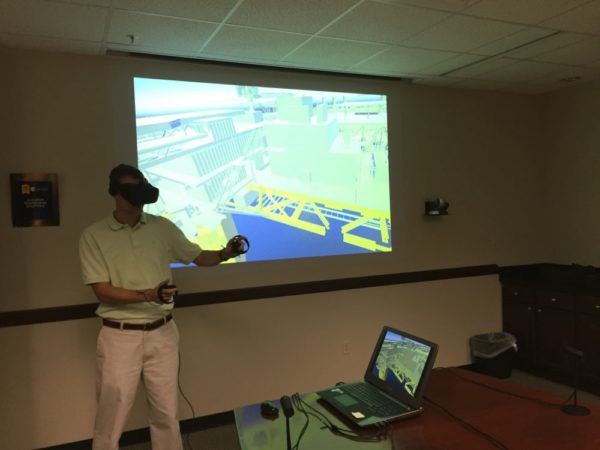Lounsbury Associates Companies Embraces Virtual Reality Technology to Improve Project Outcomes
Oct|16|2017

Over the last two and half years, oil and gas EPC firms have become increasingly focused on reducing risk, lowering development costs, and improving project outcomes. A lack of early stakeholder engagement is one of the primary hurdles they face on the way to achieving those goals. At Lounsbury Associates Companies, the use of virtual reality (VR) technology is helping to change that.
Leveraging Virtual Reality Technology
Lounsbury Associates Companies is currently applying VR technology in the oil & gas sector for model rendering and individual stakeholder reviews. The process involves converting CAD models into a navigable 3D virtual environment that leverage Lounsbury Associates Companies’ VR functionality.
“Our VR solutions provide significant advantages over traditional 2D and 3D models because they enable us to fully immerse operators and stakeholders inside the digital representation of their facility. We can evoke the sensation of physically walking through the plant without ever leaving the desk,” said Brian Lozes, VR Director at Lounsbury Associates Companies. “In addition to improving the review process by allowing operators to check for things like operability and ergonomic placement of materials, the use of VR has increased stakeholder interest and ownership of the design. The result has been more engagement and better communication, both of which can lead to significant decreases in the occurrence of late-stage field change orders and improved project outcomes.”
A similar sentiment was echoed by John Pierce, VR Operations Manager at Lounsbury Associates Companies. “In the traditional review process, design changes are looked at by the design team, the owners project team, and occasionally facility leadership. The changes, however, rarely make their way down to the final end users, such as night shift operators, lab technicians, and facility security. Setting the VR equipment up in a location that’s easily accessible for all provides an exciting and interesting way for these end users to walk themselves through the model, on their own time, and provide detailed input to the design team.”
Optimizing The Design Process
Aside from optimizing the design process, VR technology can also serve as a useful tool for customers who are looking at new ways to attract outside investment. “Our VR solutions are an ideal marketing device,” said Lozes. “With VR model showcasing, investment groups can get a real feel for the size and scope of an opportunity without having an engineering degree. This sort of experience really drives the ‘wow’ factor for development opportunities and enables customers to differentiate themselves from the competition.”
